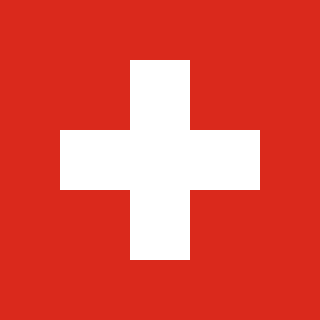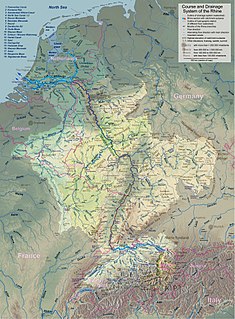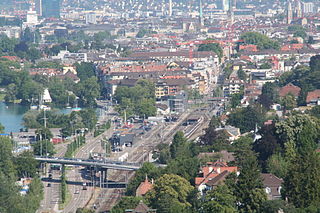
A Weidling is a flat-bottomed boat, with similarities to a punt. The weidling is traditionally constructed from solid wood, although today some boats are also made from plywood, plastic or aluminium. It is usually around 9 or 10 metres (30 or 33 ft) in length. A larger version is known as the Langschiff, and is up to 15 metres (49 ft) in length. [1] [2]

A boat is a watercraft of a large range of type and size. Ships are generally distinguished from boats based on their larger size, shape, and cargo or passenger capacity, and their ability to carry boats.

A punt is a flat-bottomed boat with a square-cut bow, designed for use in small rivers or other shallow water. Punting refers to boating in a punt. The punter generally propels the punt by pushing against the river bed with a pole. A punt should not be confused with a gondola, a shallow draft vessel that is structurally different, and which is propelled by an oar rather than a pole.
In the Middle Ages, the weidling was used for river transportation and fishing, and is depicted in contemporary works of art, including a set of altar panels by Hans Leu the Elder. [1] [2]

In the history of Europe, the Middle Ages lasted from the 5th to the 15th century. It began with the fall of the Western Roman Empire and merged into the Renaissance and the Age of Discovery. The Middle Ages is the middle period of the three traditional divisions of Western history: classical antiquity, the medieval period, and the modern period. The medieval period is itself subdivided into the Early, High, and Late Middle Ages.

Hans Leu the Elder was a Swiss painter, native to Zürich.


Today, the boat is primarily used in Switzerland, on the Rhine and its tributaries, including the Aar and Limmat. It is used as a leisure and pleasure craft, and as a passenger ferry. The sport of Wasserfahren in Switzerland is conducted almost exclusively with weidlings. [1] [2]

Switzerland, officially the Swiss Confederation, is a country situated in western, central, and southern Europe. It consists of 26 cantons, and the city of Bern as the seat of the federal authorities. The sovereign state is a federal republic bordered by Italy to the south, France to the west, Germany to the north, and Austria and Liechtenstein to the east. Switzerland is a landlocked country geographically divided between the Alps, the Swiss Plateau and the Jura, spanning a total area of 41,285 km2 (15,940 sq mi). While the Alps occupy the greater part of the territory, the Swiss population of approximately 8.5 million people is concentrated mostly on the plateau, where the largest cities are to be found: among them are the two global cities and economic centres Zürich and Geneva.

The Rhine is one of the major European rivers, which has its sources in Switzerland and flows in an mostly northerly direction through Germany and The Netherlands, emptying into the North Sea. The river begins in the Swiss canton of Graubünden in the southeastern Swiss Alps, forms part of the Swiss-Liechtenstein, Swiss-Austrian, Swiss-German and then the Franco-German border, then flows through the German Rhineland and the Netherlands and eventually empties into the North Sea.

The Limmat is a river in Switzerland. The river commences at the outfall of Lake Zurich, in the southern part of the city of Zurich. From Zurich it flows in a northwesterly direction, after 35 km reaching the river Aare. The confluence is located north of the small town of Brugg and shortly after the mouth of the Reuss.
In deep water, the weidling is traditionally propelled by one or two oars. In shallow areas, the boat can be poled along by one or two standing crew members. On waterways with suitable banks, the weidling can also be towed from shore. If the boat has a corresponding recess in the rear floor, it can also be equipped with an outboard motor. [1]

An outboard motor is a propulsion system for boats, consisting of a self-contained unit that includes engine, gearbox and propeller or jet drive, designed to be affixed to the outside of the transom. They are the most common motorized method of propelling small watercraft. As well as providing propulsion, outboards provide steering control, as they are designed to pivot over their mountings and thus control the direction of thrust. The skeg also acts as a rudder when the engine is not running. Unlike inboard motors, outboard motors can be easily removed for storage or repairs.















